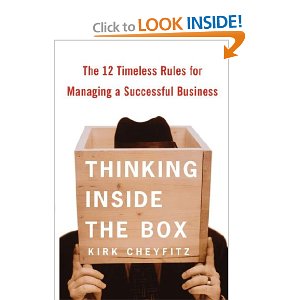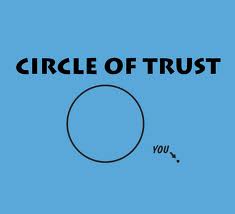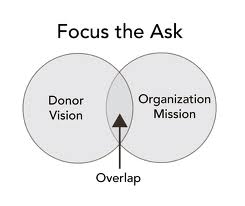 As someone who blogs every day, I find it necessary to read a lot of other people’s blogs, too. Every one in a while, I come across something that gets me thinking. If it is really good or cuts against the grain of something I believe, I might mentally chew on it for days. Two bloggers, who I respect and read a lot, are Jeff Brook at Future Fundraising Now and Marc Pitman (aka The Fundraising Coach). Both of these guys have had me chewing on something recently, and I must admit that my jaw hurts from all that macerating. The topic in question? Should you include statistics in your fundraising appeals?
As someone who blogs every day, I find it necessary to read a lot of other people’s blogs, too. Every one in a while, I come across something that gets me thinking. If it is really good or cuts against the grain of something I believe, I might mentally chew on it for days. Two bloggers, who I respect and read a lot, are Jeff Brook at Future Fundraising Now and Marc Pitman (aka The Fundraising Coach). Both of these guys have had me chewing on something recently, and I must admit that my jaw hurts from all that macerating. The topic in question? Should you include statistics in your fundraising appeals?
In recent years, the non-profit sector has been hyper-focused on things like:
- measuring program outcomes
- measuring community impact
- benchmarking projects
- analytics
I must admit that I’ve bitten into this trend as hard as anyone. I am a bit of a data geek, and I love information. If I were being truthful, I’d even admit that sometimes the old expression “paralysis by analysis ” defines my work (even though I fight hard not to fall into this trap).
The logical extension of these tendencies is to include data and statistics in fundraising appeals, which is something I’ve done for years.
So, when I recently read Future Fundraising Now and The Fundraising Coach, it felt like nails on a chalkboard for a moment. However, I try to read with an open mind, and I must admit that they have a point. Here is how I did an about-face on this subject . . .
As I thought back upon this devastating natural disaster, I remembered being glued to the radio listening to NPR deliver the blow-by-blow description of what was happening on the Gulf coast. I have very clear memories of my attention waning when the reporter started saying things like:
- 1.2 million evacuees
- $81 billion in damage
- 1,833 deaths
I also remember being glued to my radio as the reporter interviewed individuals who had survived the storm as they told their stories:
- I remember one woman telling a reporter about climbing into the attic with her family as she watched the water levels fill the first floor of her home and start to consume the second floor.
- I remember a gentleman talking about how long he had to wait on his roof for rescuers and how hard that ordeal was.
- I remember a public official talking about the national guard’s efforts to evacuate trapped senior citizens from a nursing home.
Statistics . . . .Zzzzzzzzzzzzz. Stories? Please continue … I’m listening!
There is a lot of debate about how long the written word has played a role in human culture; however, I think it is fair to say that literacy rates only started significantly climbing in the last few hundred years.
So, how did humans communicate to each other important things like:
- How to appropriately behave?
- What to value and what is important?
- Who should do what and by when?
It was storytelling. Sitting around a campfire and telling stories. Passing lessons along from one generation to the next generation by word of mouth in the form of a story with a moral to every story.
Fundraising conclusions
I still believe that measuring community impact and program outcomes is important. Please don’t stop doing this hard and arduous work. It is important to measure for accountability, stewardship and quality control purposes, but . . .
Please stop sharing all of that data with me during the solicitation process.
I want to hear warm fuzzy stories about your clients and how my contribution has contributed to those success stories.
Please train your volunteers to be good storytellers because there is nothing worse that having to sit through lunch with someone who can’t tell a good story. This is an art form. For some people it comes naturally and for others they need substantial training on how to do this.
So where should you put all of your data?
Well, I still believe that this information is an important part of being a good steward of donor dollars.
- Upload it to your website . . . those donors who love data can find it there, and this sends a strong message about your commitment to transparency.
- Share some of it in your annual report.
- Create an impact report and send it to your donors every quarter.
- Sprinkle some of it into newletter stories.
BUT . . . whatever you do, please don’t share this with me when you’re asking for my money. And if you do, please forgive me for the yawning and vacant blank stare.
If I’ve intrigued you with today’s post, then you may want to check out the blog posts by Jeff and Marc at the following links:
- The Fundraising Coach, “Throw statistics out of your fundraising letters!“
- Future Fundraising Now, “Why using statistics will kill your fundraising“
What does your agency do with its data? How much to your share with your donors? How and when do you share it with your donors? Do you include it in your written case for support document and training your volunteer solicitors to use it when soliciting contributions? Do you include it in your direct mail appeal? What has been your experience when using a storytelling approach to fundraising?
Please share your thoughts and experiences in the comment box below. Why? Because we can all learn from each other!
Here’s to your health!
Erik Anderson
Founder & President, The Healthy Non-Profit LLC
www.thehealthynonprofit.com
erik@thehealthynonprofit.com
http://twitter.com/#!/eanderson847
http://www.facebook.com/eanderson847
http://www.linkedin.com/in/erikanderson847






















